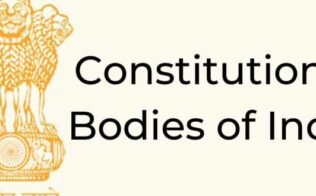With a budget of 1,00,000 crore, AMRUT became the country’s first water-focused mission in 2015. The AMRUT project serves 60% of urban populations. Over 80,000 crore in projects have been halted, and more than 77,640 crores have been granted for project implementation. Work totalling 56,000 crores has been completed, and a further 48,000 crores have been added.
AMRUT cities now have a total of 4.14 million water tap connections due to the Mission. Sewage connections for 85 million homes, including those serviced by septage facilities, have been given, bringing the total to 2.32 million. AMRUT aims to build a sewage treatment capacity of 6,000 MLD, with 1,800 MLD already constructed. In addition, processed 907 MLD increases used water recycling and reuse capacity.
[ias_current_affairs_cta]
Basic Goal
There are four major goals of AMRUT’s Project:
- To begin, make sure that every home has a reliable water supply, including a working faucet and a sewage line.
- Next, increase the amenity potential of cities by ensuring that accessible green spaces are carefully maintained.
- Enhancing non-motor transportation amenities like walkways and bicycle tracks.
- Reducing vehicle pollution is the final thing.
Read More: Basic Structure Doctrine of Indian Constitution
AMRUT 2.0
AMRUT 2.0 aspires to make 4,700 towns and cities’ water secure’ as a result of these improvements. To solve water demands, revitalise water bodies, effectively manage reservoirs, reuse waste treatment plants, and promote a circular economy of water, it will assemble on the accomplishments of AMRUT, which has already begun. AMRUT 2.0 will cost 2,97,000 crores, which includes the government’s 76,760 crores.
Until March 2023, the AMRUT 2.0 Mission will continue to get financial assistance in Rs. 10,000 crores from the Central Government and another Rs. 10,000 crores from the States.
Objectives
- About 10.7 crore people will be served by AMRUT 2.0’s goal of delivering 100% water access to all houses in about 4,700 ULBs by installing 2,68 million urban household tap lines.
- Sewage and septage will be completely covered by 2.64 million sewer connections and septage connections in 500 AMRUT cities, which will assist roughly 10.6 million people.
- Water resources will be rehabilitated, and urban aquifers will be managed to provide long-term freshwater resources.
- Approximately 20% of the city’s water demands and 40% of the industrial needs will be met by reusing and recycling treated wastewater.
- Freshwater resources and water bodies will be safeguarded from pollution under the Mission to ensure that natural resources are sustainable.
Read More: Swachh Bharat Mission Urban 2.0
Additional Features
A technology-based site will be used to keep tabs on the Mission‘s progress, and the projects will be tagged with their location. There will be an effort to make the mission paperless. A municipal water balance plan will help cities examine their water sources, use, future needs, and water losses. According to the announcement, a State Water Action Plan will be developed and authorised by MoHUA based on the city water action plans.
This also aids the digital economy. The majority of the work is done digitally. Water distribution equity, wastewater reuse, and water body mapping based on quantity and quality will all be addressed by implementing “Pey Jal Survekshan” in cities across the country in the next months and years. The Water Technology Sub-Mission will use the most cutting-edge water technologies worldwide to accomplish this goal.
The Mission’s objective is to foster Atma Nirbhar Bharat by supporting startups and entrepreneurs throughout the country. It will lead to the growth of the GIG economy and the enlistment of young and female employees. The NRSC will construct an urban water information system, which will contribute to an aquifer management system. Due to information, education, and communication effort, the public will be educated about water conservation. From contractors to plant operators to students to women, everyone will benefit from a target-based capacity building programme.
All cities with a population of one million or more are required by the mission to engage in PPP projects, i.e. Public-Private Partnership Projects worth at least 10% of their project cost budget allocations.
Implications
Safe and potable water is necessary for every country’s long-term prosperity and well-being. In this direction is the United Nations Sustainable Development Goal 6: “Ensure availability and sustainable management of water and sanitation for all.” Every part of existence is linked to water.
According to MIT researchers, water-stressed regions will be home to further over 50% of the global population by 2050. 2.5 billion people have gained access to safe drinking water supplies since 1990, whereas 666 million continue without this.
People can save time by not having to go long distances to get water. This will allow them to devote that time to other priorities like schooling and work, thus enabling them to climb out of poverty.
This is why AMRUT 2.0 has a robust reform agenda that emphasises the necessity of strengthening ULBs and ensuring comprehensive water security for cities. India’s “Water for All” goal will come closer to reality if substantial changes like regenerating water bodies, gathering rainwater, reducing non-revenue water, and installing dual pipe systems for large users are implemented.
Read More: Constitutional Bodies of India
Conclusion
New urban ideational communities based purely on skill and technological information are being formed due to this discourse, and they are reducing the amount of space available for grassroots engagement and understanding of locals.
India’s big economic leap depends on its cities’ continued competitiveness, and rapid urbanisation is a crucial gateway for this. Yet at all, this doesn’t entail that economic rather than social considerations should guide urban policy and rhetoric heading forth. Calls for such a vision, challenges, and goals that consider national ambitions and the needs of the most marginalized members of society should also be focused accordingly.





